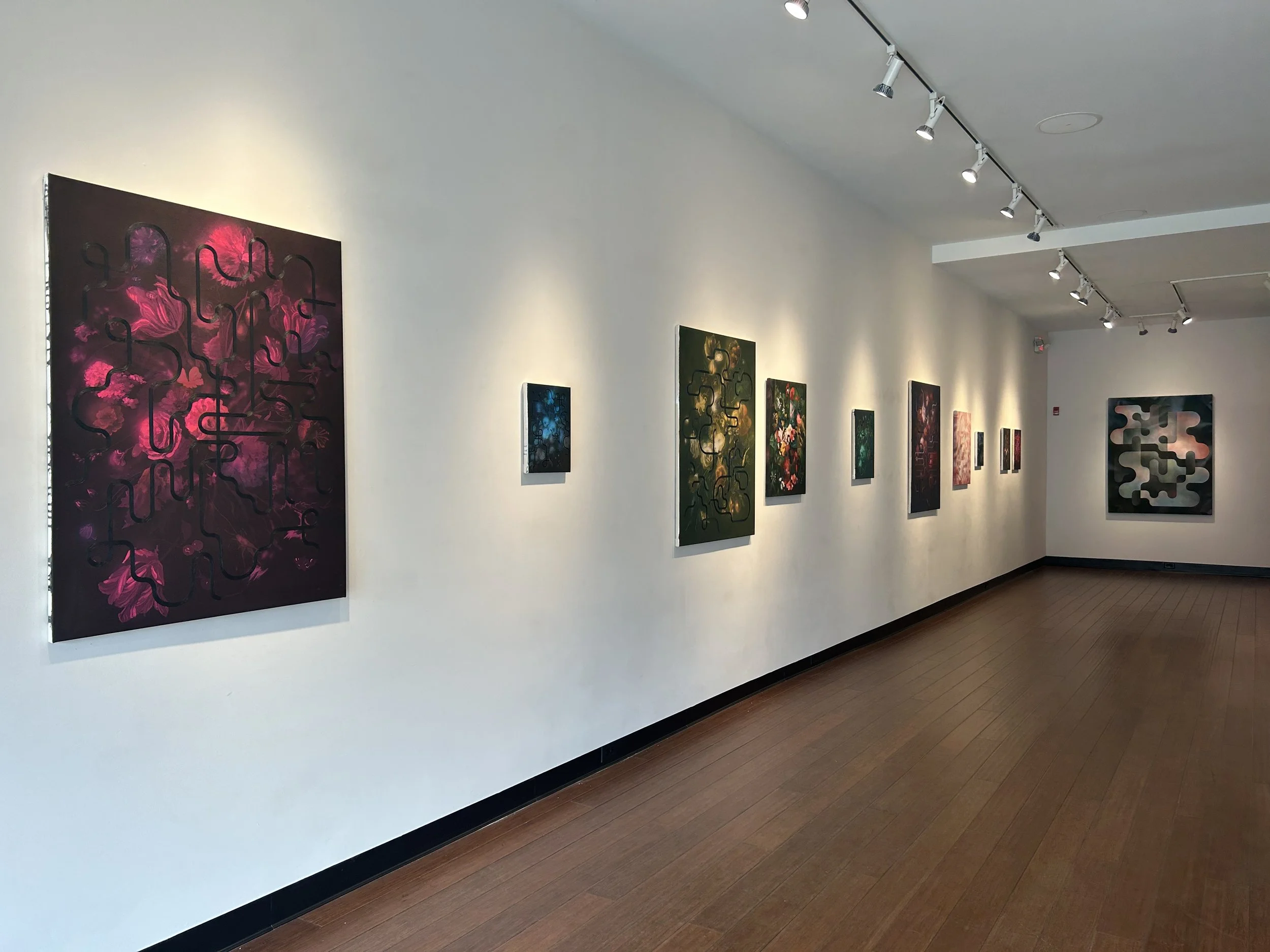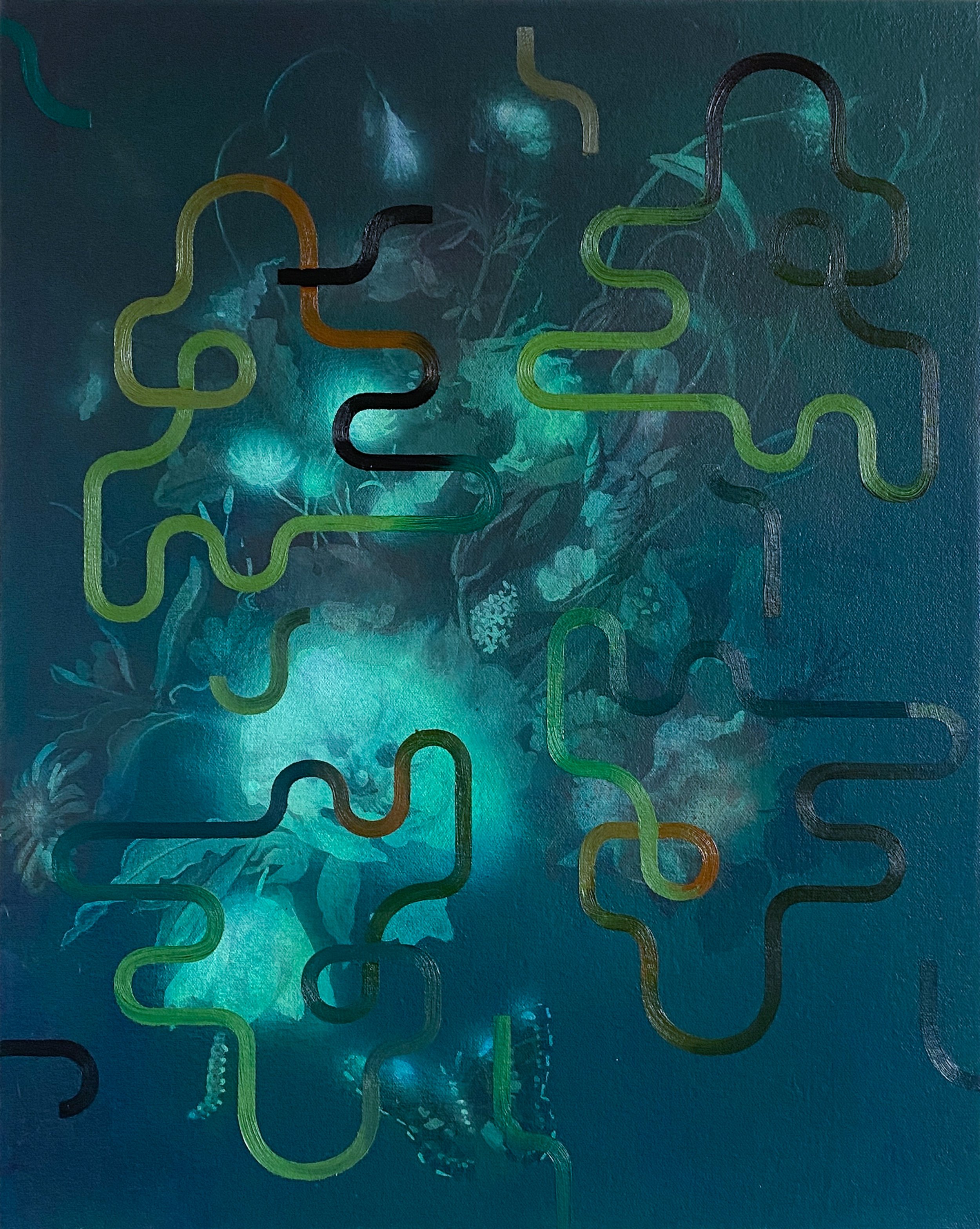
















Your Custom Text Here
JULY 27 - SEPTEMBER 7, 2024
Dark Mode. That ubiquitous viewing setting on our devices is not only a visual theme to reduce eye strain but is something of a daily ritual of gradual psychic decomposition. In this twilight state, cellular renewal occurs - we shed dead cells and generate new ones in an unseen yet constant coming and going of thought/matter within the body. Here, “dark” also suggests that which eludes direct observation - the work inspired by deep field images captured by the Hubble Telescope and James Webb Space Telescope. Sanders' initial curiosity about humanity's presence in outer space has mutated over time into a contemplation of the ability to see into the endlessness of the cosmos: what does it mean to see so much?
These concerns spurred the evolution of an interlacing linear motif that appears throughout his work. In this series, the linework takes on a new dimension, rendered in black impasto paint atop the deep field imagery. The convergence of line and image prompts an optical phenomenon: as you shift your perspective, the line merges with the background to create a perceptual blind spot within the image. The result is a paradoxical experience of an image that conceals the visible and reveals the invisible.
The mutable nature of macro-reality finds its echo in the intimate still-life paintings of Ruysch and de Heem. Their floral arrangements, captured in various stages of growth and decay, serve as both memento mori and reminders of the continuous exchange of matter. In Dark Mode, Sanders presents loosely rendered still-lives, glazed with thin films of highly saturated pigment. In this context, linear forms snake in and out of view, gesturing toward the uncertainty and formlessness fundamental to change.
JULY 27 - SEPTEMBER 7, 2024
Dark Mode. That ubiquitous viewing setting on our devices is not only a visual theme to reduce eye strain but is something of a daily ritual of gradual psychic decomposition. In this twilight state, cellular renewal occurs - we shed dead cells and generate new ones in an unseen yet constant coming and going of thought/matter within the body. Here, “dark” also suggests that which eludes direct observation - the work inspired by deep field images captured by the Hubble Telescope and James Webb Space Telescope. Sanders' initial curiosity about humanity's presence in outer space has mutated over time into a contemplation of the ability to see into the endlessness of the cosmos: what does it mean to see so much?
These concerns spurred the evolution of an interlacing linear motif that appears throughout his work. In this series, the linework takes on a new dimension, rendered in black impasto paint atop the deep field imagery. The convergence of line and image prompts an optical phenomenon: as you shift your perspective, the line merges with the background to create a perceptual blind spot within the image. The result is a paradoxical experience of an image that conceals the visible and reveals the invisible.
The mutable nature of macro-reality finds its echo in the intimate still-life paintings of Ruysch and de Heem. Their floral arrangements, captured in various stages of growth and decay, serve as both memento mori and reminders of the continuous exchange of matter. In Dark Mode, Sanders presents loosely rendered still-lives, glazed with thin films of highly saturated pigment. In this context, linear forms snake in and out of view, gesturing toward the uncertainty and formlessness fundamental to change.